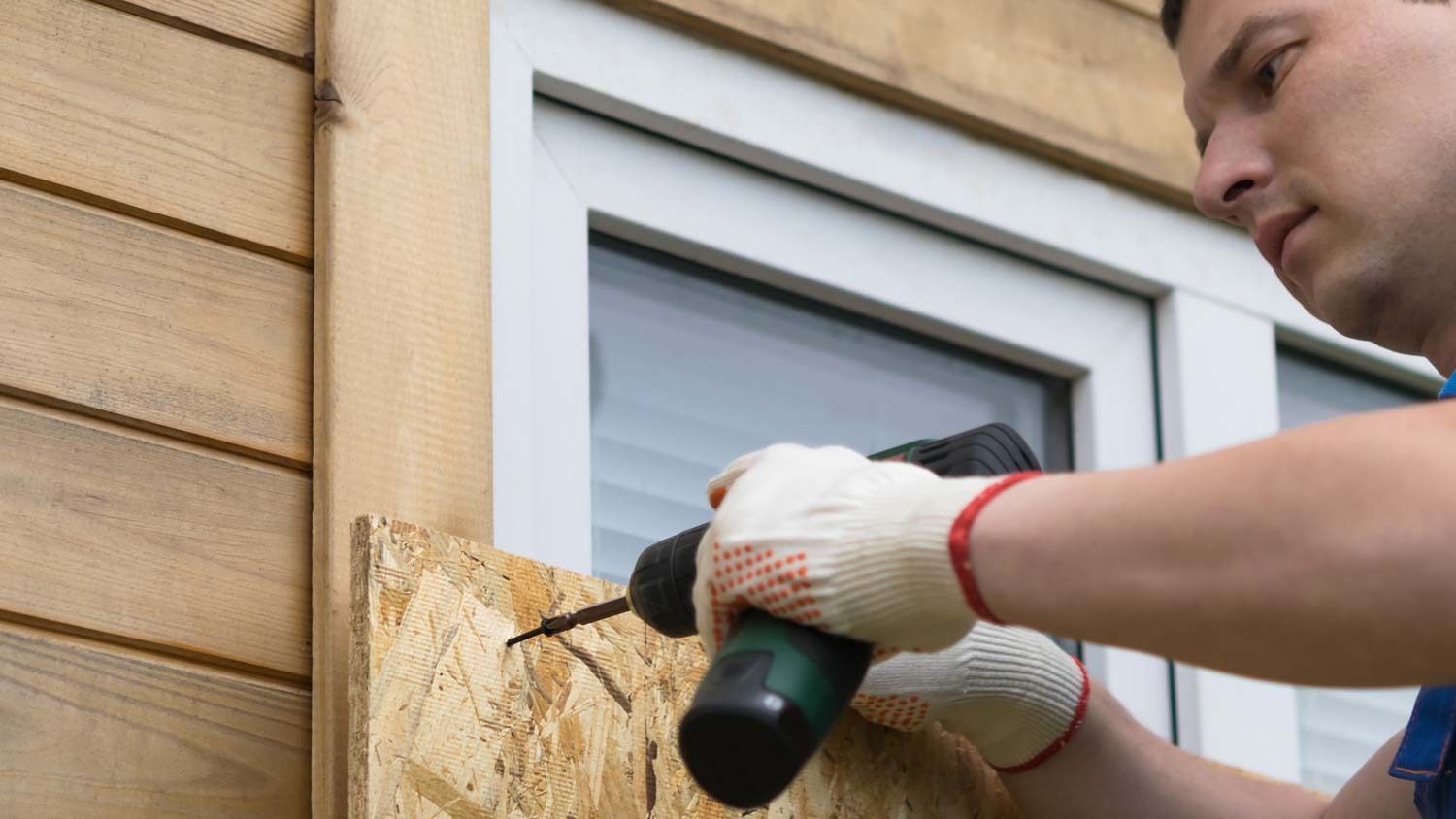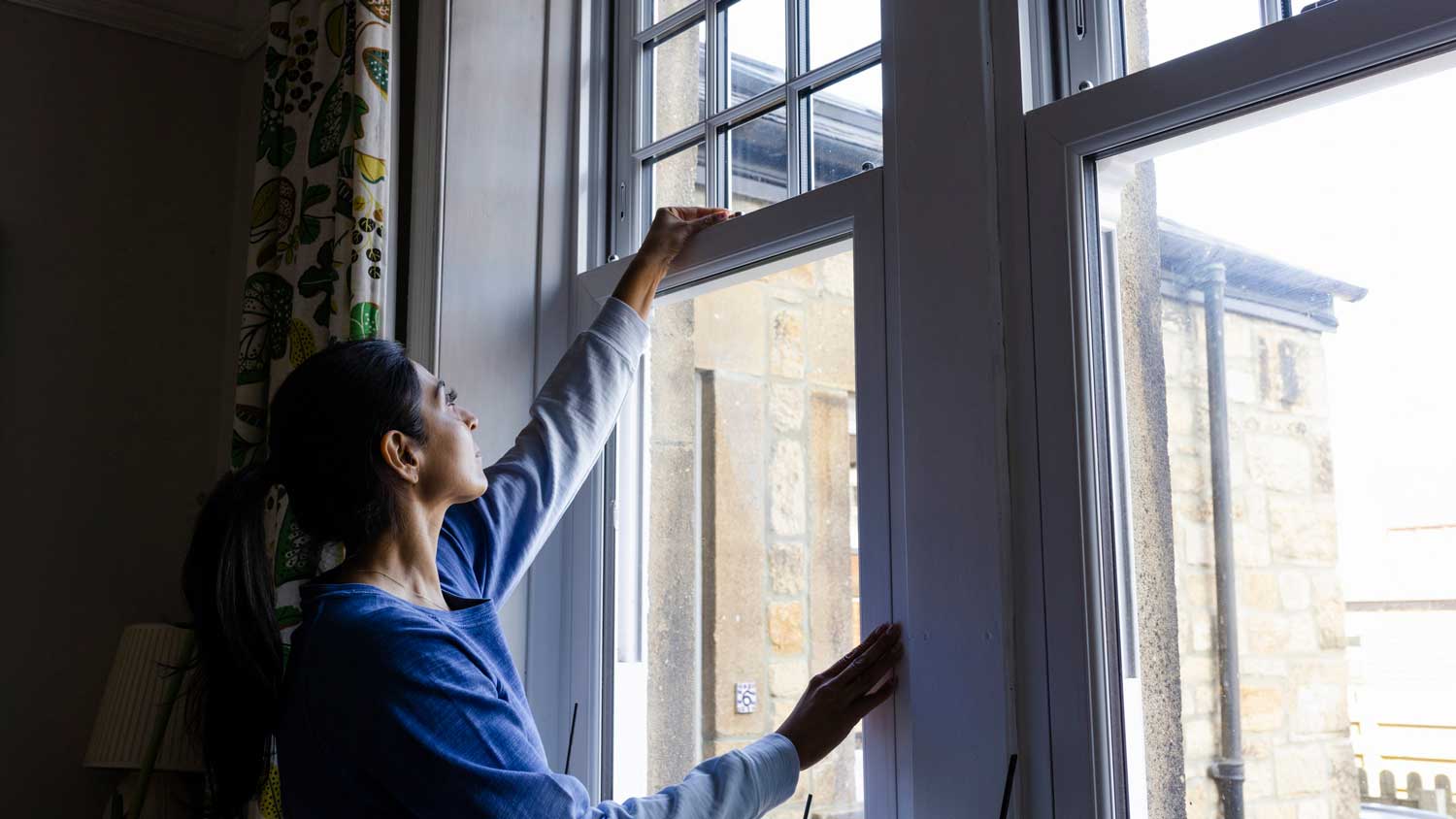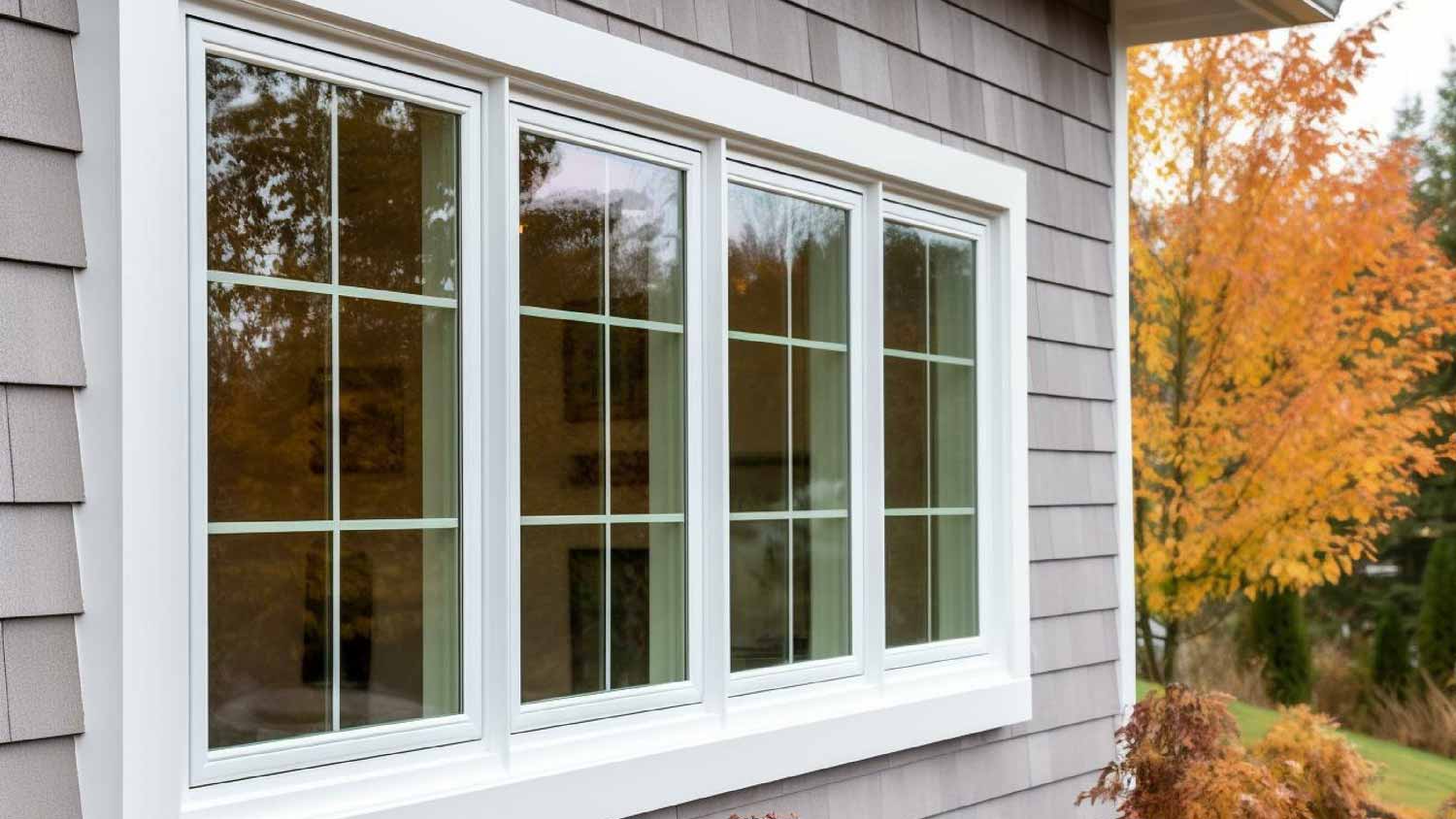
Hurricane shutter costs vary widely depending on many factors. Explore our breakdown of the elements that impact what you’ll pay for hurricane protection.
Help your windows hold up against wind, rain, and debris


The beginning of June is an exciting time of year, with warmer weather, longer days, and the official start of summer just around the corner. But if you live along the East Coast or the Gulf of Mexico, it can be a different story since it’s also the beginning of hurricane season. Preparing for extreme weather events can be daunting, but with some planning, you can make sure your home is as storm-proof as possible. Learning how to protect windows during hurricane season is a great place to start.
When a hurricane hits, it can bring high winds, heavy rain, and flying debris with it—all of which can spell disaster for your windows. If strong winds or airborne objects hit your windows, they could shatter and force glass, water, and debris into your home, posing a dangerous threat to your family.
By taking steps to protect your windows, you may be able to prevent them from breaking and minimize the storm’s damage to your house and loved ones.

You have several options for prepping your windows before a hurricane, but they all involve adding a protective barrier between your window and the outside elements. The right one for you will depend on how much money you’re willing to spend, how much time you want to allocate to the project, and whether you want to DIY or hire a professional.
Hurricane shutters fit on the exterior side of your windows, shielding your windows from wind, rain, hail, and flying objects. There are different types of hurricane shutters (including temporary and permanent options), but some of the most common are colonial storm shutters, roll-down hurricane shutters, and accordion-style shutters. No matter which kind you pick, you’ll need to set up your hurricane shutters well before a storm hits. They aren’t a last-minute solution if you only have hours to spare.
Costs depend on which type of shutter you choose and how many windows you have, but you can expect to pay between $1,550 and $5,900 for hurricane shutters. To get accurate pricing for your project, get in touch with a local hurricane shutter installer.
If you’re in a rush or on a budget, you might prefer to cover your windows with plywood to protect them against hurricanes. Plus, it’s an easy project to tackle yourself. All you need to do is purchase a few sheets of plywood from a hardware store (look for 5/8-inch- or 3/4-inch-thick sheets), cut the sheets to fit over your windows, and fasten them over your windows with lag screws.
On average, boarding up a window with plywood costs between $100 and $400 per window. However, this is a short-term solution because plywood can rot when exposed to water for too long, meaning it’s likely not durable enough to withstand multiple storms.
Hurricane fabric is a strong and flexible covering that stretches tightly over your windows, held up by a system of clips or hooks attached to your home’s exterior walls. The fabric is lighter than steel or aluminum hurricane shutters, which makes it easy to put up before a hurricane. After the storm, you can remove the fabric, roll it up, and store it.
For hurricane fabric on an average-sized window, you can expect to pay between $80 and $205 per window. However, the exact price will vary depending on the size of your windows.
Storm windows—also known as hurricane windows—are a protective layer over your existing windows designed to withstand extreme weather. You can install storm windows on the interior or exterior of your home, but the exterior versions offer the best protection against hurricane conditions.
Installing hurricane windows is more expensive and time-consuming than other storm-proofing methods, but if you live in a hurricane-prone area, they could save you money in the long run (and increase your ROI if you ever decide to sell). Storm windows cost between $4,200 and $19,850 to install, depending on the size, material, and number of windows.
When you hear that a hurricane or tornado is heading your way, minimize the risk of damage during high winds. Protect your home by installing storm shutters, securing siding to your house (most hardware stores sell straps), trimming long tree branches, and bringing in outdoor furniture.

On top of these ideas for protecting your windows, there are also some do’s and don’ts to remember for storm season. Here are a few extra tips to keep your home hurricane-ready.
Apply window film: Hurricane wndow film is a polyester coating you can stick to the inside of your windows. It’s primarily meant to insulate your home and block UV rays, but it can also stop your windows from shattering when they break. However, since it can’t stop them from breaking in the first place, it’s not a standalone solution for hurricane-proofing your windows.
Don’t tape your windows: There’s a long-standing myth that putting X-shaped pieces of tape on your windows will prevent them from breaking during a storm. However, this isn’t exactly true. In reality, your windows can still shatter—and with the tape, they’re more likely to break into bigger shards.
Keep your windows closed during the storm: You might have heard that keeping your windows slightly cracked during a hurricane can help equalize the pressure inside and outside your home. This is also incorrect. Before a storm hits, close your windows tightly to limit the damage to your house.
Clean up your yard before the storm: There’s plenty of opportunity for debris and projectiles to come from your yard, from tree branches to yard furniture, and they could blow away or hit your windows when a strong wind hits. To avoid broken windows, trim your trees and store large objects in a garage or shed. Clean your gutters so water can run down your downspouts rather than damaging your roof.
From average costs to expert advice, get all the answers you need to get your job done.

Hurricane shutter costs vary widely depending on many factors. Explore our breakdown of the elements that impact what you’ll pay for hurricane protection.

Get expert insights on shutter repair cost, including average prices, key cost factors, and tips to save money on your next shutter repair project.

If you live in an area with hurricanes, your windows may need extra protection. Use this guide to find out who installs hurricane shutters and what to look for.

Impact-resistant windows and hurricane shutters protect a home’s exterior in severe weather. This guide covers the differences so you can choose the right one.

A breakdown of the key differences between impact windows and hurricane windows, how they protect your home, and which option is best for storm safety.

If you’re preparing to install storm windows, here are the questions you can expect from a contractor about the project. Have these answers ready beforehand.